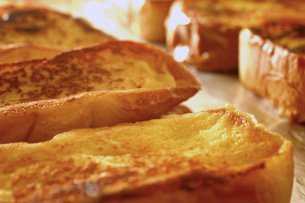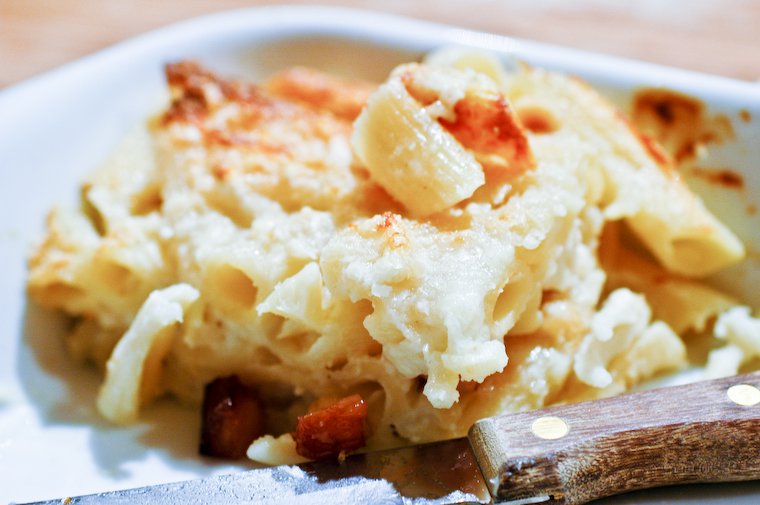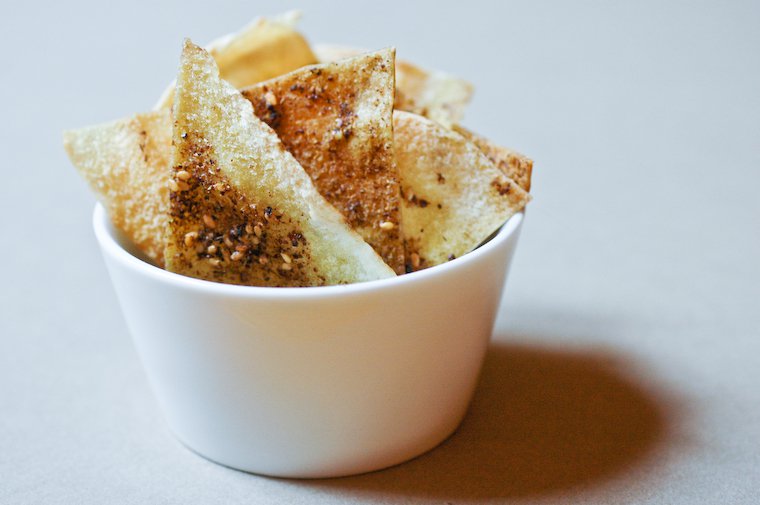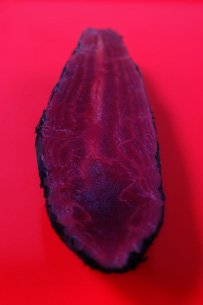
[French-Toasted Brioche]
After a main course of cider-stewed pork served with pasta gratin, this is the sweet note on which my last dinner party ended. Inspiration sprung, again, from my recent meal at Le Caméléon, where the Amaretto cherry pain perdu was enchanting.
In its most basic incarnation, pain perdu — literally “lost bread” — is stale bread that one recycles into a simple treat by soaking it in a sweet egg batter and browning it in the skillet. I love this sort of waste-not-want-not recipe, but what I had in mind here was something with just a hint more sophistication, so brioche, rather than ordinary bread, was in order.
Ideally, I should have bought the brioche the day before and let it turn stale the slow food way, through the natural action of time, but I didn’t. I showed up at my corner bakery in the morning of, and asked if they had any pain de mie brioché* leftover from the previous day. The salesgirl looked at me as if she was on candid camera (caméra cachée in French), and said that no, they didn’t keep old stuff around. All right. Fresh would do. I got home, sliced the slices, and left them out on the counter to dry.
Pain perdu normally gets eaten right off the skillet, but there were too many of us for that to work (if I wanted to sit down and eat with everyone else, that is), so I dipped and browned the slices in late afternoon, and reheated them in the oven before serving.
The plan was to serve the French toast with mango coulis and vanilla whipped cream. The mango coulis was simply mango flesh whizzed in a blender with a drop of lime juice, and for the whipped cream I was going to use the fancy N2O-powered whip I’d laid my hands on over two years ago — it’s a long story — and never once used. I was going to flavor whipping cream with fresh vanilla, pour that into the bottle, and effortlessly crown the golden slices of brioche with weightless dollops of whipped cream. My friends would be so impressed.
Turns out you should always test your weapon before you go hunting. Or, at the very least, read the manual. You would then know that you should to fit the top onto the bottle before you screw in the gas charger (oops, there goes the N2O) and that the whole thing needs to be refrigerated for a few hours if you want to produce anything more spectacular than a sputtering gurgle of unwhipped cream. Ah well. My friends love me whether or not the cream is whipped.
* A type of brioche that’s slightly less rich than the classic brioche and is baked in a loaf pan.







